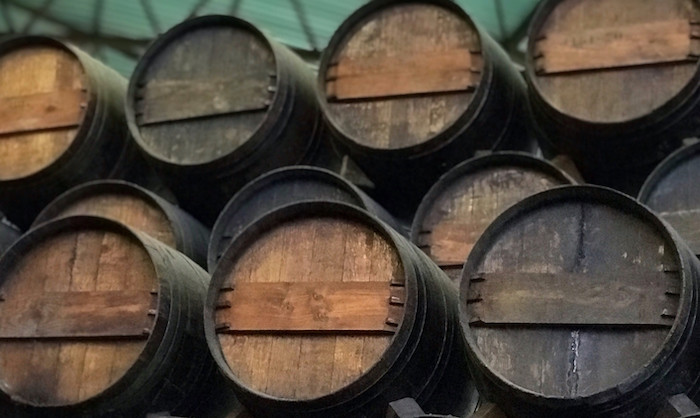
Port isn’t the only world class fortified from Portugal. Joe Wadsack has another up his sleeve – and the best bit is Moscatel de Setúbal is great value for money.
Fact: bartenders love fortified wines. Very few people get more excited than me about a glass of fino, but find a troupe of bartenders (what is the collective noun for bartenders?) in the right mood, and they are putting sherry and pineapple in the blender before you can say Fino Colada.
If you have followed my series of articles over the past couple of years, you will have noticed that fortified wines crop up a lot. The single most rational reason for this is that all classical fortified wine styles are matured in such a way as to guarantee consistency and they are reliable enough from brand to brand to be listed in the ingredients for a cocktail. The flavours of mere table wine are left much more in the hands and vagaries of the weather gods. I certainly wouldn’t use any regular wine or sparkling without having tried It first.
For most bartenders, fortified wines include sherry and port, and perhaps Madeira, if they have been paying attention. Well, I never like to leave a job half done, so is there anything else that you budding Cobbler-lovers should be made aware of?
Well, the short answer is yes. Not only are there fortified wines as yet unmentioned in this column, but there are some from France that give their own subtler twist to drinks. Not only France, there is a truly magical Portuguese fortified wine, made essentially the same way as a tawny port, that is currently rarer than rocking horse shit, but about to mount a resurgence with all the support that the Portuguese government can muster. This, ladies and gentlemen, is the wine of Setúbal.
It is, to quote a former resident of this prestigious district south of Lisbon, The Special One. Sightings of Moscatel de Setúbal DOC are traditionally so fleeting that despite being simply one of the most delicious fortified Muscats in the world, it is not even mentioned on Wikipedia as a product of the region. Said to have been invented by Portugal’s most famous vinous pioneer, José Maria de Fonseca, back in the 1830s, the gigantic company that bears his name sells table wine and fortified wine all over the world. Although José Maria de Fonseca makes the vast majority of it, there are several small producers of Moscatel de Setúbal, and the excellent Bacalhôa Vinhos, perennial gold medal winner at the Decanter World Wine Awards.

Value for money
Nearly 20 growers of Moscatel de Setúbal will be descending on Manchester and London later in September this year. In its youth it is insanely good value for money, and tastes of vanilla and barley sugar with a pure, almost quince-like, raisiny quality. As it gets older it simply gets more delicious – figgy, and spicy and deeply caramel the more time passes. Compared to the cost of top-class tawny port, a 20-year-old Moscatel de Setúbal is insanely good value for money.
I can’t begin to think of the opportunities that this wine would afford the creative bartender, and its intensity would ensure that one bottle would go a very long way. One of my favourite stories about the sublime, delicious nature of Setúbal wines involves a fellow wine expert, Simon Woods, whose knowledge of port and sherry is not inconsiderable. Invited to a special, increasingly ancient vertical tasting of Moscatel de Setúbal wines, some of which were over 100 years old, he described to me how utterly delicious and beguiling the 20-year-old wines were and how he really couldn’t imagine the older wines continuing to get better. “By the time I had arrived at the 70-year-old wines, I was giving them scores of 125 out of 100.”
So, want to know what the fuss is about? Waitrose, believe it or not, sells José Maria de Fonseca’s entry-level Moscatel de Setúbal for a mere £7.99 a half bottle. If you want a taste of the high life, then €30 will buy a half bottle of the 20-year-old online, half of which is between 30 and 80 years old. Like I said. This truly is a bargain. Join me next time to see what the French have to say about all of this.


